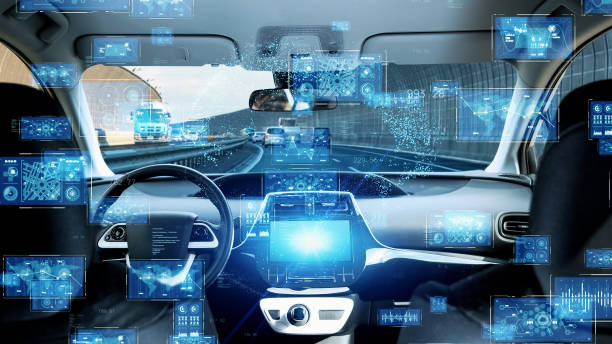Holographic Heads-Up Displays: The Next Frontier in Automotive Interface Design
Imagine cruising down the highway, your eyes never leaving the road, yet having access to all the information you need—speed, navigation, vehicle diagnostics—seemingly floating in mid-air before you. This isn't science fiction; it's the promise of holographic heads-up displays (HUDs), poised to revolutionize how drivers interact with their vehicles. As we stand on the cusp of this technological leap, let's dive into the world of holographic HUDs and explore how they're set to transform the driving experience.

Holographic HUDs: A Quantum Leap Forward
While current HUD technology has made significant strides, holographic HUDs represent a quantum leap forward. Unlike traditional HUDs that project a flat image onto the windshield, holographic displays create three-dimensional images that appear to float in space before the driver. This technology leverages advanced optics, high-resolution projectors, and sophisticated software to create vivid, full-color holograms that can convey complex information in an intuitive, spatially aware manner.
The Technology Behind the Magic
At the heart of holographic HUD systems lies a combination of cutting-edge technologies. High-intensity micro-LED projectors capable of producing extremely bright, high-resolution images form the foundation. These are paired with advanced holographic optical elements—essentially, specially designed diffraction gratings—that shape the light to create three-dimensional images. Eye-tracking cameras and AI algorithms work in tandem to ensure the holographic elements are always perfectly positioned relative to the driver’s line of sight, regardless of head movement or vehicle motion.
Enhancing Safety Through Augmented Reality
One of the most promising aspects of holographic HUDs is their potential to enhance driver safety through augmented reality (AR) features. By overlaying holographic information onto the real world, these systems can highlight potential hazards, provide real-time navigation cues, and even project virtual lane markers in low-visibility conditions. For instance, a holographic arrow could appear to float above the correct exit ramp, or a virtual brake light could be projected onto the road surface at a safe following distance, helping drivers maintain proper spacing in traffic.
The Challenges of Implementation
Despite their potential, holographic HUDs face several challenges on the road to widespread adoption. The first is cost—the advanced optics and processing power required make these systems expensive to produce. There’s also the challenge of integration; holographic HUDs require careful calibration and alignment with the vehicle’s windshield and interior geometry. Regulatory hurdles must be overcome as well, as transportation authorities grapple with how to ensure these systems enhance rather than distract from safe driving practices.
The Future of Driver-Vehicle Interaction
As holographic HUD technology matures, we can expect to see increasingly sophisticated applications. Future systems might incorporate gesture controls, allowing drivers to interact with holographic elements using hand motions. Personalized displays could adapt to individual drivers, presenting information in ways tailored to their preferences and driving styles. The technology could even extend beyond the driver, with passenger-side holograms providing entertainment or work-related information.
Implications for Vehicle Design
The advent of holographic HUDs could have far-reaching implications for vehicle interior design. As more information is presented via holograms, traditional instrument clusters and center console displays might shrink or disappear entirely, freeing up space for other features or allowing for more minimalist, streamlined interiors. This shift could also influence exterior design, as windshields may need to be optimized for holographic projection, potentially leading to new aesthetic directions in automotive styling.
In conclusion, holographic heads-up displays represent a fascinating convergence of optics, computing, and automotive engineering. As this technology continues to evolve, it promises to not only enhance the driving experience but also to fundamentally reshape our relationship with our vehicles. While challenges remain, the potential benefits in terms of safety, convenience, and user experience make holographic HUDs one of the most exciting frontiers in automotive interface design. As we look to the future of driving, it’s clear that the view through the windshield is about to get a whole lot more interesting.





